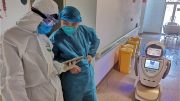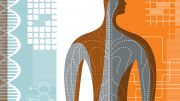Nurses hold roles across the entire care pathway, and as a result they have the most varied experience, from working with colleagues in other specialisms. In the more than 20 years that I’ve been a nurse, the ‘job description’ has changed somewhat, with the most recent iteration being influenced by the increasing digital transformation of care. And with that, the rise in prominence of the digital nurse.
It’s no surprise that this role has become more familiar, when nurses make up 72% of the clinical workforce in the NHS. In fact, the role having a digital influence makes complete sense. The government has set out ambitious digital transformation targets for health and care providers to meet, not to mention the growing prominence of Integrated Care Systems (ICSs) which came under statutory footing earlier this year. These will rely on more clinical staff taking on digital roles if they are going to operate effectively and keep patients safe.
It’s no secret that digital transformation improves patient safety and experience
Digital transformation, including the widespread use of electronic patient records (EPR) across the NHS only improves patient safety and experience. I’ve witnessed this first-hand at places such as Bolton NHS Foundation Trust, which has been recognised for its improvements to patient safety by working collaboratively across clinical and digital to configure its EPR. However, having worked at many hospitals, such collaboration isn’t always commonplace, causing a disconnect between these groups. This can then cause a reluctance among some clinical teams to embrace technology, and for digital colleagues to lack the clinical context they need to develop helpful solutions that will improve the efficiency and safety of frontline care.
So, when changes are made without nurses being involved, it’s easy to understand why they sometimes resort to paper workarounds! To bridge this gap, we need to invest in the digital nursing profession. When nurses hold roles at every point of care, it is only sensible to look to them to unlock a more collaborative, joined up approach to digital transformation.
The role of the digital nurse is underutilised
Currently this nursing perspective is underutilised, with many nurses (self-admittedly) accidentally landing in digital roles as projects have unfolded, often without training. Rather than relying on this willingness to contribute, the digital nurse should exist on all patient facing digital projects and be involved in planning, delivery, and optimisation. Since they spend most of their time delivering care to patients, nurses are ideally placed to identify gaps in service provision, patient safety issues, and which changes will have the greatest impact at the point of care.
That said, it’s important that this role is seen as a specialist position and not an extra line on an already demanding job description. With proper leadership, time can be allocated to fulfil the role properly. For example, at Medway NHS Foundation Trust during its EPR rollout, nurses were deployed as digital champions for the entirety of the project, with their clinical positions backfilled so they could focus on the EPR deployment. It enabled the ‘smoothest rollout’ the trust’s director of IT had ever seen. Doing this is possible, but it will require forward planning by senior leadership teams, and proper investment in the workforce to protect against shortages in the sector.
Speaking the same language to improve patient and clinical experiences
Nurses bring a unique perspective – one that can ensure digital transformation is delivered with patient experience and safety at the forefront. In an A&E department I worked in, I remember having to ask patients for the same information time and time again, and them becoming frustrated. Being on the ground, I could see the multiple touchpoints patients have, understand their frustrations, and suggest the solution that would fix them.
Being on the front line means nurses can assess the appetite for digital transformation among other clinicians, understand the constraints they are operating within, and speak the clinical language. In other words, they can bridge the gap between the clinical and the technical. By doing this, it makes gaining buy-in from the whole team easier.
The somewhat omnipresence of nurses across the care pathway is incredibly valuable and can unlock innovation in multiple settings. In my experience, the presence of nurses on digital projects has greatly improved patient safety in acute settings. Take Gloucestershire Hospitals NHS Foundation Trust as an example. The decision was made to roll out EPR to nursing colleagues first, and when the doctors could see the positive impact it was having, they were eager to introduce the technology to their workflows too, quickly rolling out across the in the emergency department, inpatient wards, and for allied health professionals. However, I foresee nurses playing a role in other areas of clinical priority, such as the development of virtual wards, or in backlog management.
A digital first culture will bridge the clinical and technical divide
The only way to do this is to make digital ways of working a prerequisite. To make this possible, I would have digital skills development embedded in the training and onboarding of new nurses. With EPRs becoming more commonplace it should be a baseline requirement, to encourage the digital first culture that is needed to deliver modern health and care.
My nursing role first took on a digital aspect more than ten years ago, where I helped shape the EPR in the ICU I was working in. This opened my eyes to the important role that digital plays in improving patient safety and experience, and since embracing these digital elements, I have been able to have a far greater impact on patient care than I did when I was working solely at the bedside. While I have always been able to see the factors contributing to poor experiences and safety, since embracing the power of digital, I’ve had the tools to rectify them.
The digital nurse bridges the gap between the people with the experiences and the people with the tools to make these experiences better. At the end of the day, that’s why we do what we do. I hope that in the years to come, we see digital nurses on all patient facing IT projects, and that there are opportunities to collaborate with technology suppliers or fulfil trust-based digital roles as a pre-requisite. For now, we have a collective responsibility, as suppliers, managers, and colleagues to empower nurses to take on digital roles when they appear, so their value in improving care can continue to be recognised.
By Judy Sealey, Registered Nurse and Expert Solutions Specialist, Altera Digital Health





